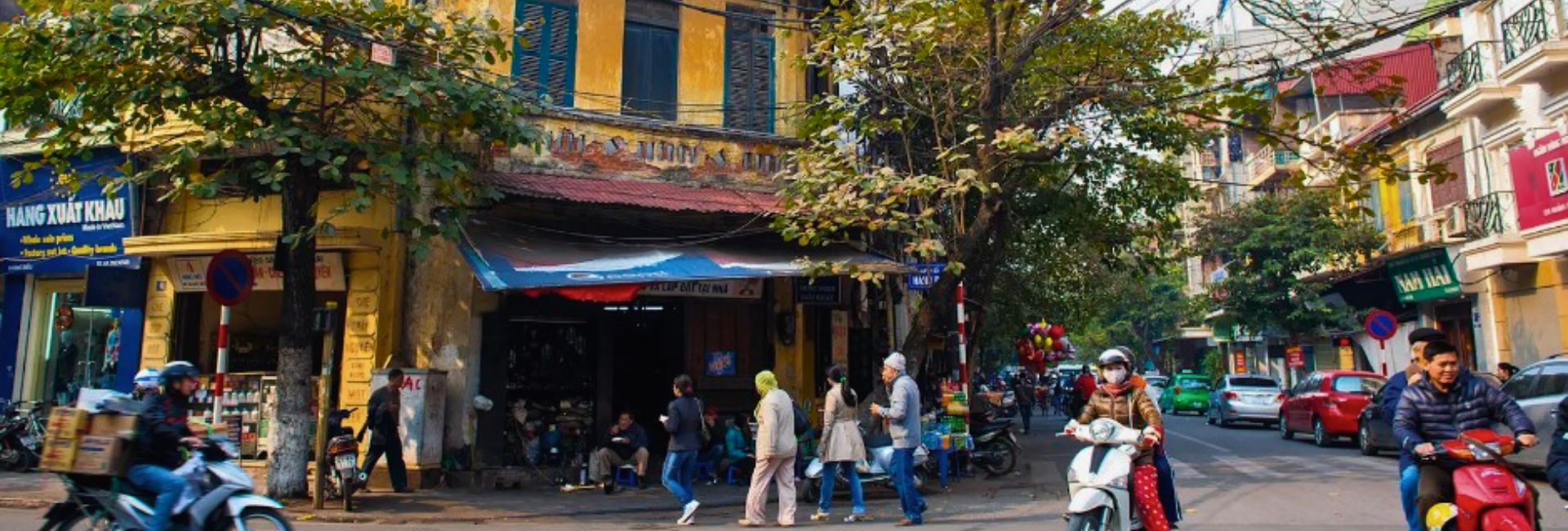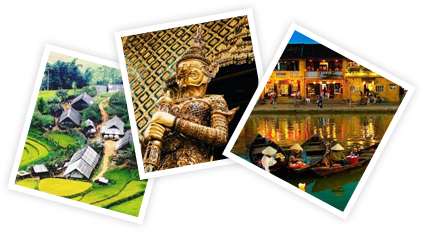Hanoi is a vibrant capital city of Vietnam offers a fascinating blend of ancient traditions and modern energy throughout the year. In this comprehensive guide, we’ll explore the best times to visit Hanoi based on weather conditions, cultural festivities, and neighborhood experiences to help you plan the perfect Vietnamese adventure.
When Are the Best Months to Visit Hanoi?
The best times to visit Hanoi are generally during spring (February to April) and autumn (September to November). These shoulder seasons offer the most pleasant weather conditions for exploring the city comfortably.
During spring, Hanoi experiences pleasant temperatures ranging from 15°C to 25°C (59°F to 77°F), with blooming flowers creating picturesque scenes, particularly in April.
Autumn in Hanoi is characterized by cooler temperatures, ranging from 20°C to 30°C (68°F to 86°F), making it ideal for exploration. The humidity is lower, and the weather is generally clear, allowing for blue skies and stunning photography opportunities.
However, it’s important to consider your personal preferences when choosing when to visit. Each season in Hanoi has its own unique charm and attractions, whether you prefer the lively festivals of summer, the tranquility of winter, or the vibrant colors of spring and autumn.
Hanoi Weather by Season
Hanoi in Spring (February – April)
Hanoi’s spring is a magical time when the city comes to life with blooming flowers and pleasant temperatures. As February marks the transition from winter to spring, the weather begins to warm up gradually. March sees the arrival of warmer days and occasional light showers, while April brings even milder temperatures, making it ideal for outdoor exploration.
During this season, locals prepare for and celebrate the Lunar New Year (if it falls in February), adding cultural richness to your visit.
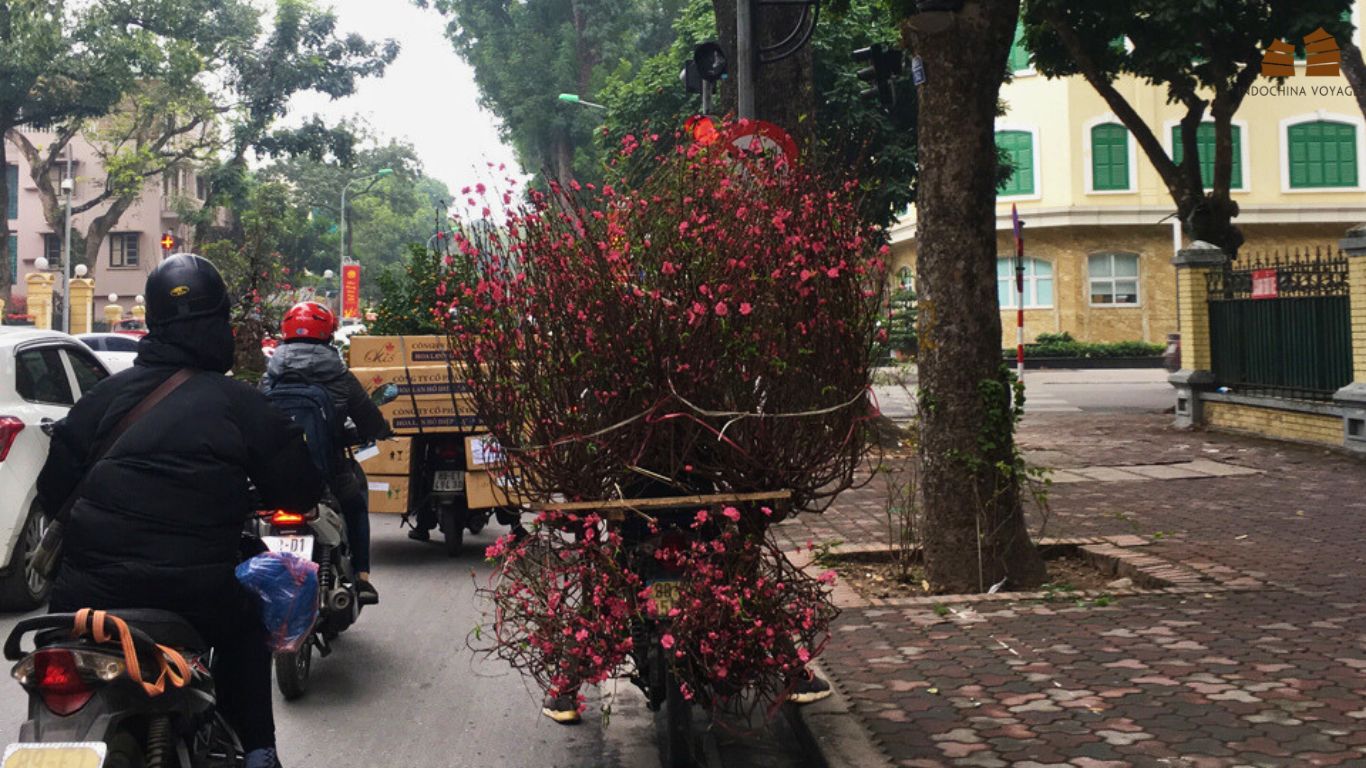
Hanoi in Summer (May – August)
Summer in Hanoi is characterized by high temperatures and occasional rainfall, creating a humid climate. Despite the heat, this season offers vibrant cultural festivals and events. June and July are the hottest months, while August brings slightly cooler temperatures, but humidity remains high.
You may sweat considerably and encounter sudden drizzles when walking along streets during the day. However, these typical weather conditions of tropical countries only surprise travelers from other regions. This could be the best time for you to visit Hanoi if you don’t mind the heat and want to truly experience tropical weather.
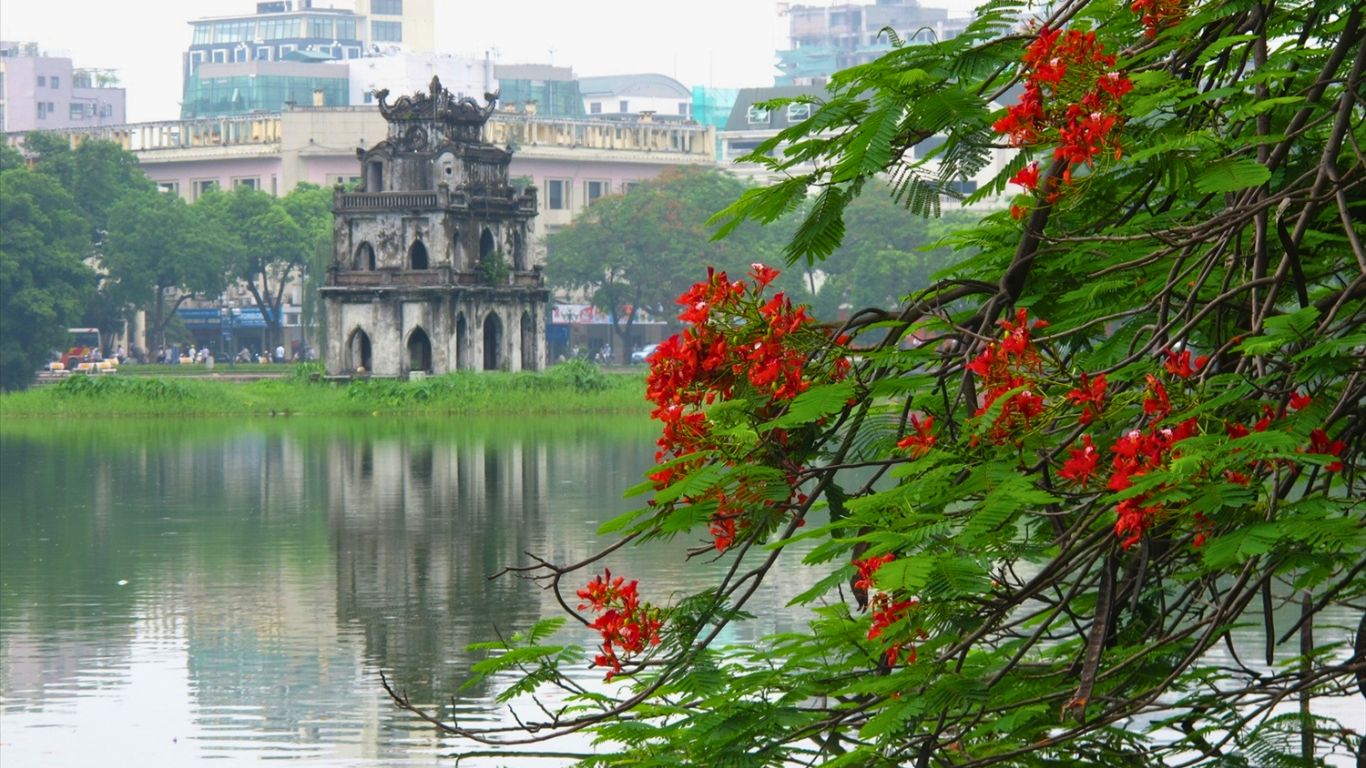
Hanoi in Autumn (September – October)
Autumn is widely considered the best time to visit Hanoi, thanks to its mild temperatures and clear skies. September is particularly pleasant, with comfortable weather perfect for outdoor activities. As October approaches, the city is adorned with vibrant foliage, creating a picturesque backdrop for exploration.
With the average temperature at 25°C, Hanoi’s autumn is beautiful because of warm sunlight, cool weather, and dry atmosphere. If you love seeing the leaves change color, enjoying Hanoi’s autumn specialties such as young green rice, and appreciating the slower pace of life, you definitely should come to Hanoi in autumn.
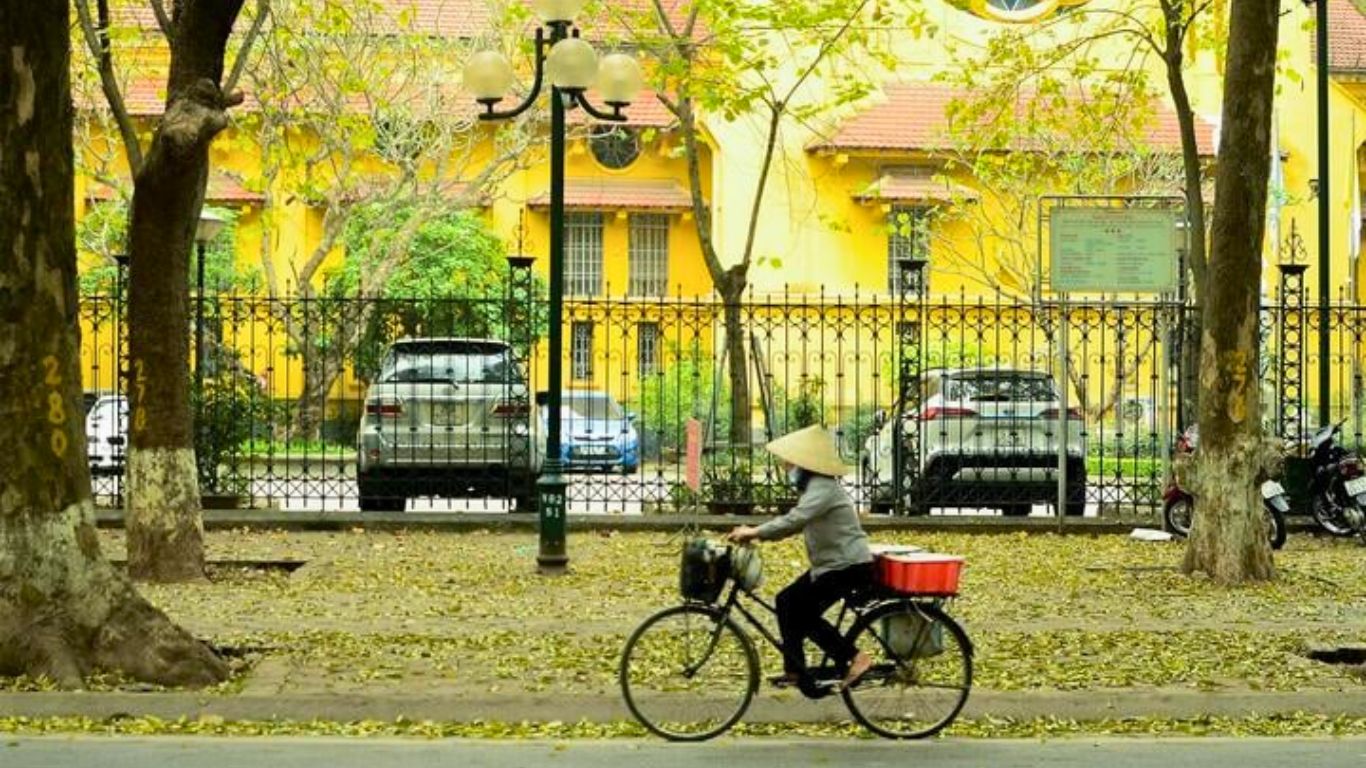
Hanoi’s autumn touches people’s hearts with its gentle breezes, fragrant milk flowers, yellow leaf-covered roads, and romantic ambiance. This is the perfect time to experience Hanoi’s ancient and poetic beauty.
Hanoi in Winter (November – January)
Hanoi’s winter is characterized by cool temperatures and occasional drizzles, creating a unique charm. November sees a gradual decline in temperatures, signaling the arrival of winter. December and January bring cooler weather, making it the perfect time to indulge in hot bowls of pho and explore Hanoi’s cultural attractions without the crowds.
If you’re a Western traveler, you might be familiar with these temperatures, but the cold in Hanoi feels different. The breezy winds and high humidity make Hanoi’s winter feel much colder than the thermometer suggests. Don’t forget to bring enough thick, warm clothes.
Local Neighborhood Experience by Season
One of the most fascinating aspects of Hanoi is how its different neighborhoods transform across the seasons, each offering unique experiences depending on when you visit:
Spring (February – April)
West Lake Area: This upscale district becomes especially beautiful during spring with peach blossoms dotting the landscape. The lakeside cafes provide perfect spots for enjoying the mild weather with views of traditional fishermen. The nearby Tay Ho Temple is particularly active during spring festivals.
Summer (May – August)
Ba Dinh District: The tree-lined boulevards of this political center provide welcome shade during the hot summer months. The wide streets catch pleasant breezes, and evening street food markets become more vibrant as locals seek outdoor dining in the cooler evenings. The Presidential Palace grounds and botanical gardens showcase lush tropical vegetation in full bloom.
Autumn (September – October)
French Quarter: Hanoi’s French Colonial district takes on a nostalgic atmosphere in autumn with golden light filtering through yellow leaves on stately buildings. The wide avenues lined with mature trees turn a beautiful gold color, and the outdoor cafes around the Opera House become perfect spots for people-watching in the comfortable temperatures.
Winter (November – January)
Old Quarter: The narrow streets of Hanoi’s ancient commercial district offer protection from cold winds, and its traditional tube houses and cafes become cozy retreats serving seasonal warm drinks. Winter is when the Old Quarter’s street food scene truly shines, with steaming pots of pho, hot pot restaurants, and egg coffee becoming especially appealing in the cooler temperatures.
Hanoi’s Cultural Tapestry: Festivals and Events
Mid-Autumn Festival
The Mid-Autumn Festival, also known as Tet Trung Thu, celebrates the harvest season and is especially beloved by children. Taking place in September or October, this festival features colorful lanterns, dragon dances, and mooncakes. Hanoi’s streets become vibrant with colorful decorations and performances during this time.
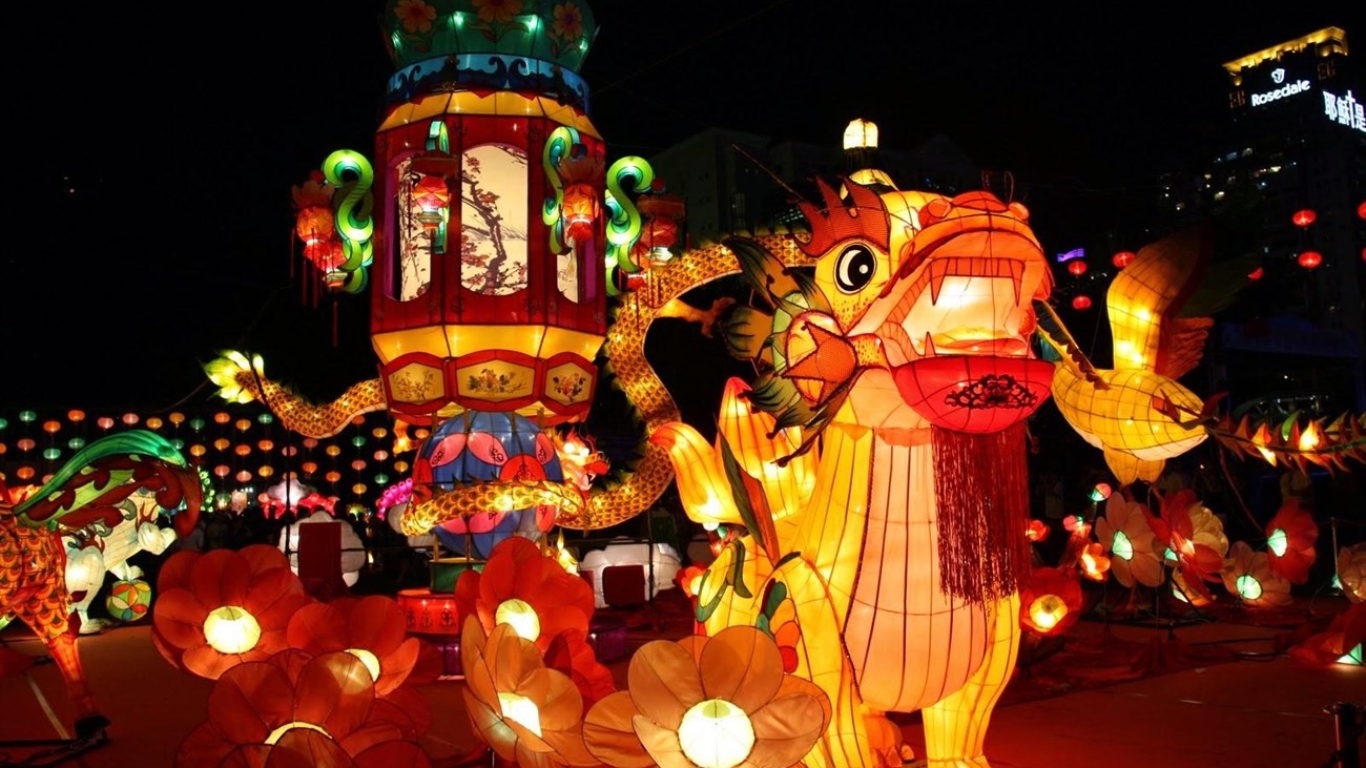
Tet Festival
Tet, or the Vietnamese Lunar New Year, is one of the most important festivals in Hanoi and Vietnam. Celebrated in January or February, depending on the lunar calendar, Tet marks the beginning of spring and is a time for family reunions, feasting, and paying homage to ancestors.
The festival officially lasts three days, but most people celebrate for the whole week. Locals typically close shops and take part in the colorful parades and festivities that take place in the city streets. This is one of the best cultural events in Vietnam, though travelers should note that many businesses close during this period.
Frequently Asked Questions About Hanoi Weather
What is the rainiest month in Hanoi?
In Hanoi, the rainiest month of the year is typically August. During this month, Hanoi experiences a higher frequency of rainfall and often records the highest precipitation levels. The rainfall in August can be quite significant, with occasional heavy downpours. However, weather patterns can vary from year to year, so it’s advisable to check the local weather forecast closer to your intended visit.
What is the wettest month in Vietnam?
The wettest month in Hanoi is typically July. During this month, Hanoi experiences high levels of precipitation and frequent rainfall. It’s worth noting that while July is generally the wettest month, there can also be significant rainfall in June and August. Weather patterns can vary slightly from year to year.
Choosing the best time to visit Hanoi depends on various factors and personal preferences. If you prefer comfortable temperatures and minimal rainfall, spring (February – April) and autumn (September – November) are your best options. If you’re interested in cultural festivities, consider planning your trip around Tet in winter or the Mid-Autumn Festival in fall.

